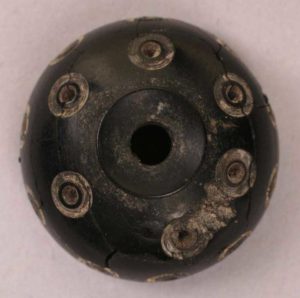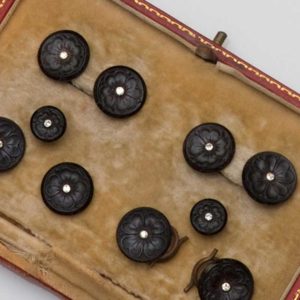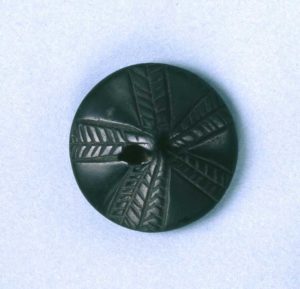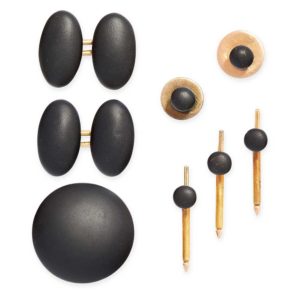Jet buttons have been used since the Bronze Age and the first jet object was carved much earlier. They were extremely popular during the Victorian era, especially on mourning dress.
[cfgeo include=”GB”][/cfgeo]
[cfgeo exclude=”GB”][/cfgeo]
Below are some examples and price guides of jet buttons including a matched dress set with central diamonds and a jet and enamel dress set with a brooch.
Jet carved Button 8th–10th century
The dot-in-circle motif recalls designs presumed to be of magical significance, most likely an abstract eye to ward off the evil-eye, which serves an apotropaic function. Easily reproduced with a tool and visible in many cultures and times, this symbol may have lost its meaning, and become simply a decorative pattern, or may have one that we have not yet discovered.
Excavated in Iran, Nishapur
Reference: The Metropolitan Museum of Art
A MATCHED DRESS SET The concave jet discs with carved four petal flowerhead detail, each with centrally set diamond, the set comprising a pair of cufflinks, four buttons and two studs, (one button possibly replaced with tortoiseshell example), cased.
Sold for £ 312 inc. premium at Bonham’s in 2008
Jet button Bronze Age. Cut and polished to peaked dome bevelled to convex base with central drilled v-perforation. Upper face with incised decoration. Perimeter defined by two concentric circles with hatched infill. Centre with four hatched pendant triangles in cruciform design, running chevron on inner circles.
© The Trustees of the British Museum
AN ANTIQUE JET AND ENAMEL BROOCH AND DRESS SET SUITE, 19TH CENTURY in yellow gold, the brooch set with a matte polished piece of jet, the cufflinks, buttons and studs all with matte black enamel decoration, the cufflinks stamped 14, brooch 2.7cm, cufflinks each face 2.0cm, 24.0g.
Sold for £280 at Elmwood’s in 2021



